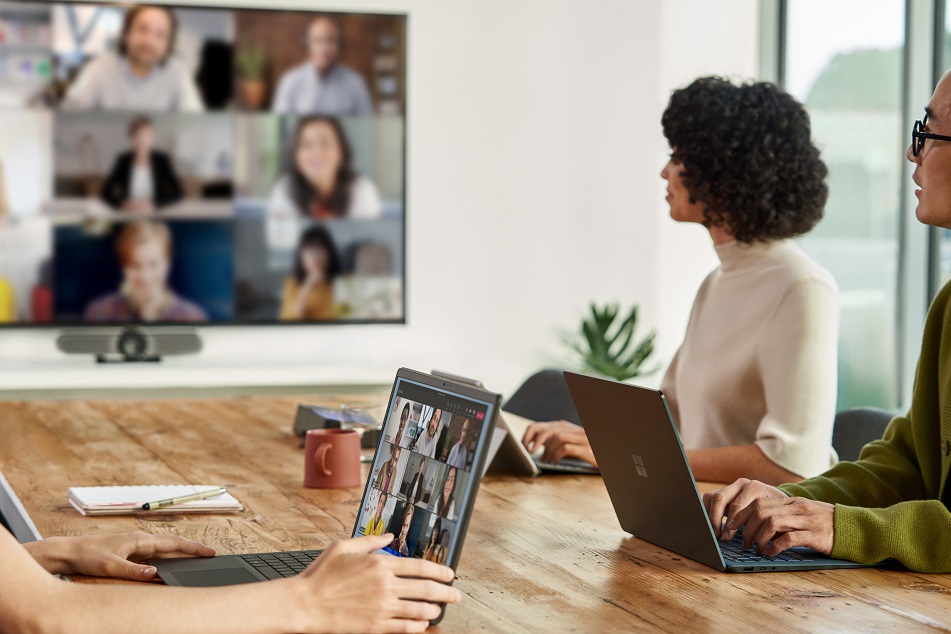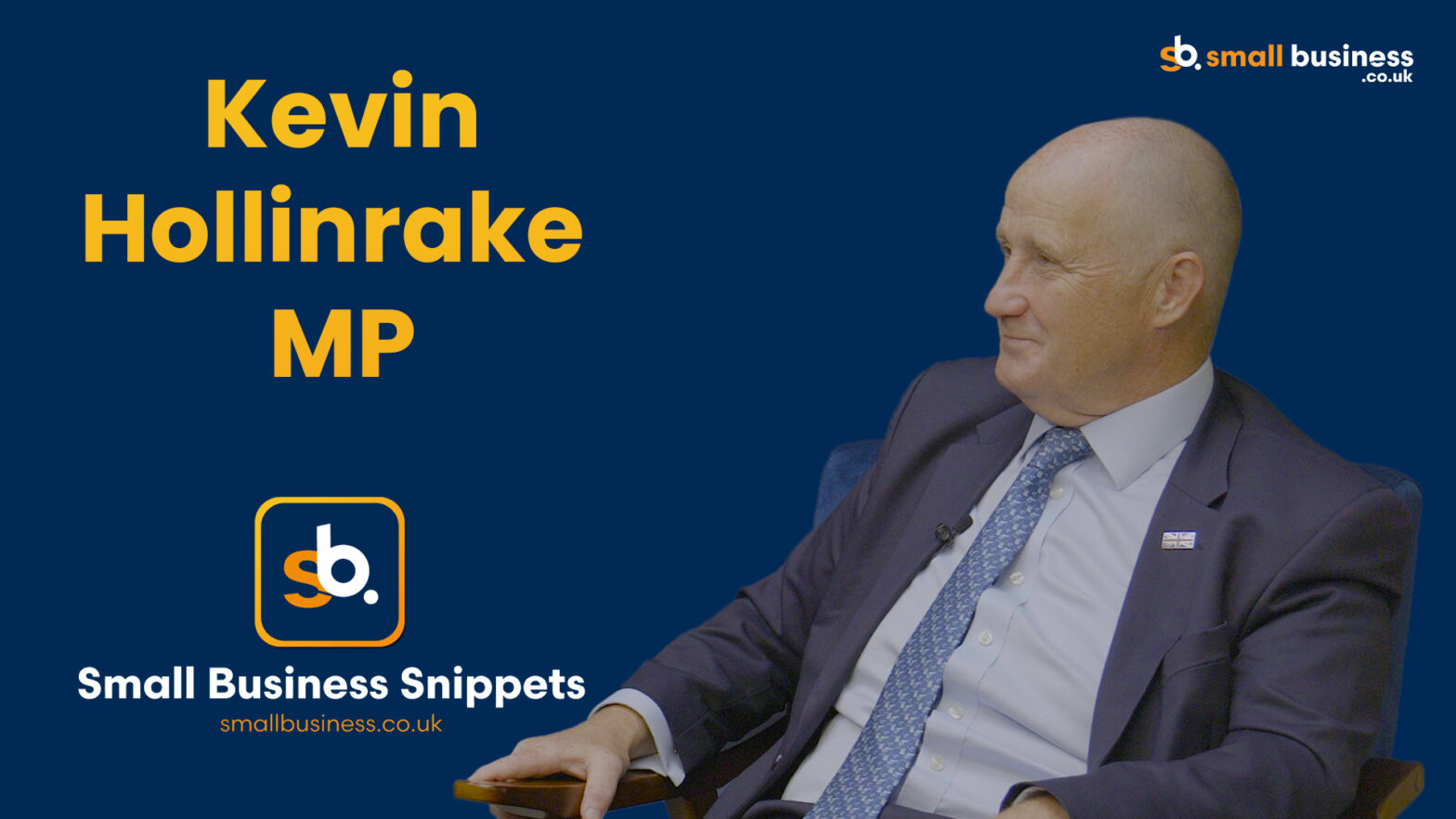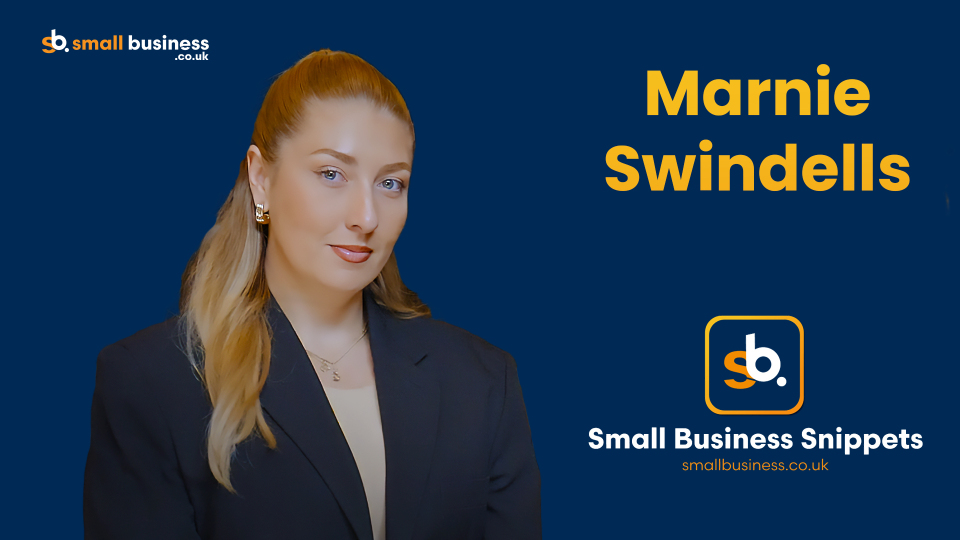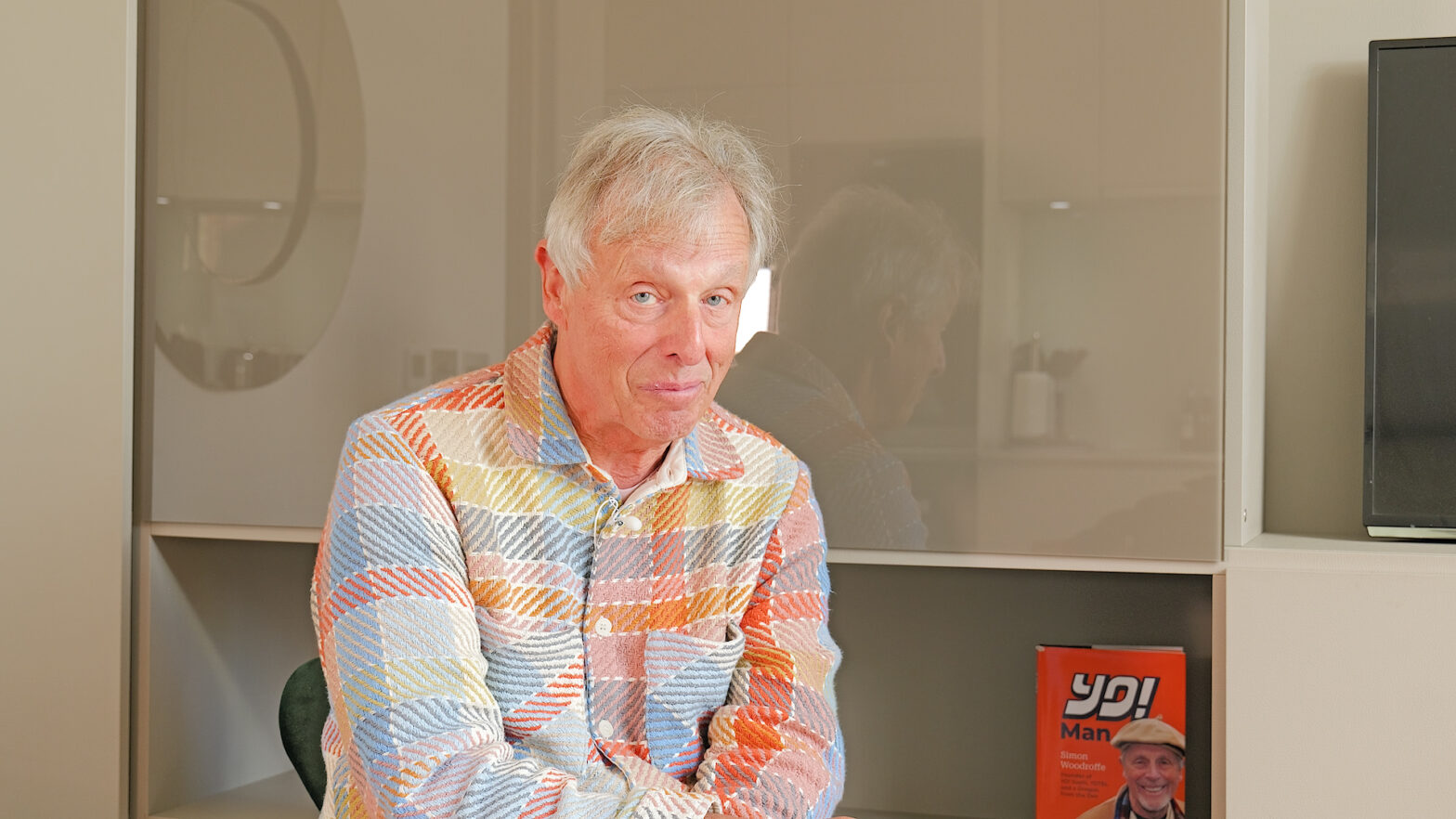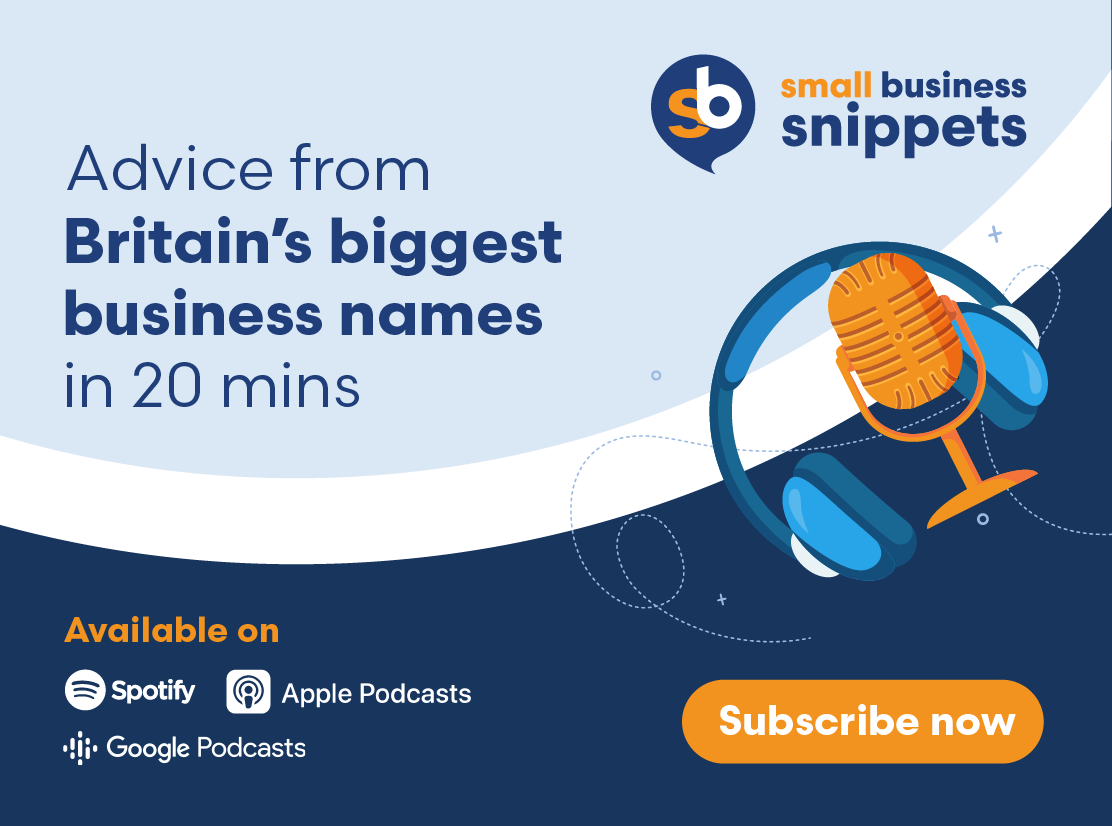Welcome back to Small Business Snippets, the podcast from SmallBusiness.co.uk.
Today we have a special episode, brought to you by Microsoft. Guests Nico Charritton, senior product marketing manager at Microsoft and Tiffany St James, founder of Curate 42 and Transmute consultancies, discuss hybrid working and the tech tools that can make it happen.
Listen to it in the media player below.
Or you can watch a couple of video teasers below.
You can also catch our episodes with:
- Founders of My Supper Hero, Myleene Klass and Jamie Barber
- Pub owner and winner of The Great British Bake Off, Candice Brown
- Entrepreneur and former athlete, Sally Gunnell
- Entrepreneur and The Apprentice winner, Sian Gabbidon
- Abel & Cole founder and chairman of Freddie’s Flowers, Keith Abel
- Entrepreneur and The Apprentice 2019 winner, Carina Lepore
- Dragon Tej Lalvani and entrepreneur Sam Jones
- Angel investor, entrepreneur and TV personality, Spencer Matthews
- Entrepreneur and former Dragon on Dragon’s Den Ireland, Lady Chanelle McCoy
- Businessman and The Apprentice winner, Mark Wright
- Entrepreneur and campaigner, Paul Lindley
- Managing director of Brompton Bikes, Will Butler-Adams
- Businessman and author, Gerald Ratner
- Entrepreneur and TV presenter, Trinny Woodall
- Pub owner and bartender on Channel 4’s First Dates, Merlin Griffiths
- Founder and chairman of Pimlico (formerly Pimlico Plumbers), Charlie Mullins
- Retail expert and former Dragon, Theo Paphitis
- Author and boardroom expert, John Tusa
- Digital guru and investor, Sherry Coutu
- Entrepreneur and former Dragon, Rachel Elnaugh
- Businesswoman and Dragon, Deborah Meaden
- Entrepreneur and The Apprentice 2005 candidate, Tim Campbell
- Gousto CEO, Timo Boldt
- Entrepreneur and The Apprentice 2018 candidate, Jackie Fast
- Investor and former Dragon, Piers Linney
- Investment fund manager, Nicola Horlick
- Supermodel turned entrepreneur, Caprice
We’ve got podcast episodes from the first series looking at:
- How one business owner’s mental breakdown caused her to see trolls from her past
- How one entrepreneur hired a videographer to track their every move and build their business brand
- How funding a business led one entrepreneur to stress-related alopecia
- One entrepreneur’s first professional public speaking engagement
- Adapting to UK life and learning English before starting a business
- Securing seed funding
- Finding the perfect head of customer care
- Reaching a £1 million annual rate of return
- Boosting client numbers from 30 to 850
- Starting a brand new business from scratch
To find out more about Small Business Snippets, you can download the trailer.
If you want to listen to the podcast elsewhere, it’s available on Apple Podcasts, Google Podcasts and Spotify. Watch the new video versions and subscribe over at our YouTube channel. It’d also be great if you could leave us a review.
Remember to like us on Facebook @SmallBusinessExperts and follow us on Twitter @smallbusinessuk, all lower case.
Microsoft podcast transcript
Hello and welcome to Small Business Snippets, the podcast from SmallBusiness.co.uk. I’m your host, Anna Jordan.
Today we have a special episode, brought to you by Microsoft. I’m joined by Nico Charritton, senior product marketing manager at Microsoft and Tiffany St James, founder of Curate 42 and Transmute consultancies, to discuss hybrid working and the tech tools that can make it happen.
Anna: Hello, both how are you doing?
Nico and Tiffany: Very good. Very well, thank you – and yourself?
Anna: Yeah, yeah, very well. Very excited about this podcast!
So, before we jump into questions, tell me a little bit about yourselves. Nico, would you like to start?
Nico: Yeah, sure. I’m Nico. I’ve been with Microsoft for about 11 years now. I lead our go-to marketing strategy for the modern work and security solutions in the small business space from a Microsoft perspective. So, everything around Teams, Windows 365, Office 365, and all of those beautiful things that we know and love very much – that lands with me.
Great stuff. How about you, Tiffany?
Tiffany: Thank you so much. I’m Tiffany St. James and I’m a digital strategist by trade at Curate 42. We help large businesses and complex businesses with deeper digital engagement. So, really helping to understand new technologies and how that can help people connect with their audiences.
Fantastic. And with that in mind, we’ve seen so much change in the past couple of years. So how has hybrid working changed the game for small businesses? Let’s start with you, Tiffany.
Tiffany: Yes, certainly. So, I think business owners more than anything, and particularly small business owners, have to be more adept, really. I mean, small businesses who are perhaps, you know, more flexible, having a smaller remit of people. But really, you’ve got to understand technology, be able to set your own meetings, be able to interact and engage, be able to collaborate, be able to understand new tools and how they can help you to be able to communicate with your customers and your peers. That has accelerated so much in the last few years. There are some of the top lines if that helps.
Over to you, Nico.
Nico: One of the key things that we see in the market is how businesses are pivoting to understand the employee experience, right? Because if you go back in time, the shift to remote work was very messy. There was a very steep learning curve, steep on adapting to managing new tools and stuff like that. Then working from home was very diverse for different people. Think about the flat that has a bunch of housemates all dialling into calls at the same time gets very loud or people home-schooling the kids. It was very, very challenging.
We’ve seen an increase of 250 per cent in meetings. There were no breaks between meetings. So, there is a lot of fatigue. It took a toll on, I would say, physical and mental wellbeing. This is something that as we open back up, we see the paradox of ‘I want to keep the flexibility that I gained through the pandemic, but I want to have more in-contact collaboration with my colleagues’, which is real paradox. And we’re trying to figure out, well, ‘How do we do this?’ What we see now is that people are rethinking the, ‘Where do I work? And how do I work?’ They have a new ‘worth it’ equation, right? It’s something that they are thinking about whether I need to stay or not in this company to fulfil my dreams, even. In fact, 41 per cent of UK employees are thinking about changing their employers soon. It’s something that is very tangible. We see it in the market: there is a great reshuffle there and the war for talent is heating up.
Tiffany: I’m just responding to that really, Nico. One of the things that that we’re noticing as well, certainly in that, waking up to ‘who am I and what do I want to do it for’, organisations looking at how different parts of their teams in demographics are responding to the hybrid challenge. So you have, perhaps, older, more established employees who are actually very well self-directed, but actually, perhaps a little bit more resistant to come into the office, unless it’s in professional services, your accountancy and your lawyers are all brilliantly back in the office, but actually, then you have a younger audience that perhaps are really keen to come into the office, because that’s part of the social life that they have, and actually learning on-site and perhaps aren’t as well directed at home. So, there’s just another nuance and flavour that we know organisations are dealing with.
Nico: Absolutely. One of the things that we usually talk to business owners about is rethinking the business and approaching three angles, I would say, on the people side is prioritising on these wellbeing efforts, being at the centre of the hybrid strategy, providing the flexibility for people to choose when to work, how to work and from where, of course, with the ground rules based on the type of business that they have. Then the leaders having that role as a model of those behaviours that they need to bring if they want to create a culture of hybrid work.
The second would be about the places on thinking about the human interaction being so critical still for having great culture and then how they have responsibility to create this combination of physical and virtual, but rethinking the role of the office space place, right? There is no reason to go to the office, like you need to make it worthwhile. ‘Why would I waste time commuting, there is nothing for me’, right? There is no one-size-fits-all, going back to what we were talking about, being the person who might want to go to the office to find peace and quiet from the housemates or the person who might stay at home to find peace and quiet because they have a great setup of a home office.
Finally, the processes – how do you use tools as an enabler? The tools are not going to create the culture. That’s very clear, right? It’s culture-first with tools as an enabler. Then defining those policies and procedures for asynchronous communication and collaboration, not only synchronous. It’s interesting, because there is a perception of ‘If I’m not in a meeting, I’m not working.’ It’s very tricky, right? Flexibility doesn’t have to be equal to ‘always on’ working. We need to create that clarity with employees. This is very clear.
Finally, on security, right, you need to make sure that you have a zero-trust approach to cybersecurity, because it’s getting tougher.
All vital points – and I totally agree with you about hybrid technology being an enabler. And you yourself, Tiffany, what kind of collaboration software do you use to meet these things that Nico has laid out?
Tiffany: Yeah, really interesting to hear your points, Nico. So, essentially, one of the things that I do help organisations and clients deliver is help them with more agile working. So perhaps in a pre-hybrid world, if you like, then you had people working perhaps in silos, even in small businesses. The marketing team might stick together, and the design team might stick together and sequentially pass projects to each other.
Whereas actually, what we’ve seen during hybrid working is being able to help them work in more the method, I guess, in a more agile way that was developed for software development sprints, if you like. A stand-up morning meeting, which is very easily enabled by great technology to be able to pull everyone together for a quick 20-minute morning meeting is actually probably easier to do digitally. Whether there are people in the room and outside of the room in a hybrid way than it would be together everyone if they were all in-person and on the premises in one place. So certainly using collaborative software, to be able to really change the way in which organisations work in a more agile and collaborative fashion. And, of course, baked into great tools, is collaboration software, such as whiteboarding – being able to click meeting notes in situ, and being able, when someone’s speaking, to be able to comment on that, or to be able to understand how what you’re saying is landing in real time that people wouldn’t perhaps interrupt you in an in-person meeting, but can easily chat within the tools themselves.
So, we’re looking at collaborative documentation and co-creating things together whereby you might actually do something collaboratively, asynchronously as Nico was saying, in different times, and then come together to be able to discuss that. That’s the way in which I’m using these technologies to be able to help people work more productively, I guess.
Anna: Yeah, and there are solutions that can work for different types of employees. Employees that are typically a bit quieter, might find it easier to speak up in a written format, rather than in-person where they might feel a little bit drowned out.
One of the bigger issues that we’ve seen recently, and especially in the past couple of months, there’s been a steep rise in costs. So Nico, how has that affected small business’ ability to access this kind of collaboration tech? And how can they access it in a cost-efficient kind of way?
Nico: Yeah, this is one of the main concerns that small businesses have today – and they come to Microsoft for that very reason. In fact, one of the things that we see that when people moved, or businesses moved from the all in-person to all-remote, they went to any type of technology they could find to make it work and survive. And that was something that was very inspiring to see, I would say at the time.
Then very quickly, business leaders realise that, oh, there’s a lot of benefits from this digitisation. We’ve seen retail shops doing kerbside pickup with click and collect orders. We’ve seen fitness trainers doing streaming of their classes, we’ve seen therapists doing video conferencing with their patients, we’ve even seen dentists taking check-ups and screening online, which is fantastic.
However, very quickly, the cost can start to add up. Going back to what Tiffany was saying, if you think about it, you have document collaboration, you have file storage in the cloud, you have chat and video collaboration, you have forms and surveys for your customers, you have process automation, you have cybersecurity, everything adds up. Then you end up paying like £60 per user per month. It’s just not sustainable for many businesses.
This is where they come to Microsoft because we do have that hero product in Microsoft 365 Business Premium, tailored for small and medium business at just £16.60 per month. Very quickly, you save all of that cost. You can operate and have all of that to have a gold standard of technology that supports that growth that you want and keeps you with that edge and the benefits of the cloud, or even you don’t drag behind if you adopt technology, right? Because that’s another thing – competitive advantage – using technology as a competitive advantage of not falling behind. This is key for business.
Absolutely. But I suppose however great the hybrid working technology is, there’s always going to be some kind of issues there like lag or things that can’t really be helped. Tiffany, you collaborate with other clients and entrepreneurs? What challenges do you face in making these interactions?
Tiffany: Well, absolutely, I mean, I’m a good believer, of course, that there’s great many benefits in reach and time savings with virtual and hybrid working as opposed to in-person. But of course, there are challenges. And one of the things that that I spot quite often is that clients and people that I’m working with and collaborating with have different stages of digital maturity, you know, some are more experienced than others. Therefore, you want to ensure that when you’re working within a collaborative environment, that everyone feels that they have the tools and can use the tools in the right way to be able to do that meeting, that job, that virtual conference, whatever it might be, you don’t want anyone to feel silly. Not everyone likes to be able to ask those open questions when they’re perhaps with people they don’t know. It’s really identifying that.
One of the things that that you can do to help with that, of course, is onboarding. So making sure that everyone’s aware of the tools that they have in their hands, and not dumping them straight into a live event or a live conference, but bringing them into a perhaps a safe area and getting them used to it, assuming that no one has used it at all before, perhaps, and reminding people at the start of either a meeting or an event of the facilities that we’ll be using. So that it’s actually setting that good ground, I think, before you meet or use a piece of technology. That’s setting out, I guess, the rules of engagement: how we’re going to use this, how we’re going to work together today and making that really clear for everyone.
Of course, it’s very difficult sometimes to see nonverbal cues, or they’re more limited perhaps in virtual or hybrid ways of being able to understand, perhaps, body language or looking at the things that aren’t perhaps said. We know, of course, aside from the things that you said, I know that people suffer from digital fatigue, because they’re online so much more of their day than they were before.
Absolutely, yeah. I know if I joined a company, and I had to do a presentation straight away, I would retreat, 100 per cent! There was a lot in there about culture and how different companies handle themselves and respecting employees’ needs. But for the more technical side of, say, video conferencing – Nico, how can small businesses mitigate these challenges?
Nico: I think one of the things that we’ve done over the past few years is iterate on product development. Because we realise that the products that we had when we entered the pandemic, were potentially not ideal for what we needed during or after the pandemic, right? So, a lot of iteration in terms of adding the ability to raise your hand or going to break rooms and stuff like that was really enriching. As Tiffany said, that digital fatigue was a critical problem we needed to address and a couple of little things that we added into the products were the ability to set up by default meeting a bit shorter. So, if you usually set an hour, it will cut 15 minutes in the end, or if it is a 30-minute, you can cut five. Also, during the meeting, you get a five-minute warning when you’re about to close. So, you wrap up and you give people time, right? We’ve seen studies looking at the brain’s activity on how five-minute breaks in between meetings can really help you with your cognitive activity to reset. So that is really good.
Going back to the nonverbal cues. This is something that, for me, is really important. I love presenting and one of the things that I found very hard remotely is how do I bring myself and my gestures, my hands, into the presentation? We added things like Cameo into PowerPoint in Teams. So, you can embed yourself as part of the content. So you are at the front and you’re pointing to the slides and you feel like a news presenter and that brings like breaks through that or even if we look more into the future, mesh into Microsoft Teams is our Metaverse immersive reality where you can use an avatar instead of your camera. So, if you cannot turn on your video, your avatar can move and do the gestures that you cannot do. Because we’re in an awkward space. Those types of little things will help us as we embrace them more and more. Then how do we break the differences between being in the room and being remote? So, if you think about it, if you’re in the room, you might miss that chat or the reaction that you had when we were remote. So, coming in with your phone as a companion and having that through the Teams mobile app. Very easy to access from that. Or how do you get a better understanding of who’s talking or the transcription if you’re remote? So, we have now intelligent cameras that capture who’s talking and you have speaker recognition, those type of things really, really help.
Finally, going back to the way you work, and measuring it, is like fitness. If you measure you can improve. So we have Viva Insights, a module within Teams that helps you understand your patterns of work, how many extra hours you’re working, how much time or focus time you have for yourself, and it gives you practical tips to follow up on things that you committed to, block yourself some focused time to connect with your managers or your direct reports, if you haven’t connected for a while, all of those things and as a leader they can give you practical insights into how the organisation is working. So, you can proactively reach out to them with that coaching to help them cope or prevent burnout.
There’s so much in there, how it can enable employees to kind of manage the wrong workload, but to also let leaders oversee, which is fantastic. A big part of what you were talking about there, I suppose, was the future-proofing and the ongoing developing tech, but there are also vulnerabilities in that tech.
I’d like to move on and talk a bit about cybersecurity, if you wouldn’t mind. It’s a concern for a lot of small and micro business owners. So how can how can they improve their cybersecurity in a cost-effective way, Nico?
Nico: Yeah, this is a top of mind for most small and medium sized businesses. In fact, 65 per cent of SMBs have been suffering attacks in the last year in the UK. And we’ve seen a 300 per cent increase in cyberattacks. So, when you think about all of these, it can be a bit scary. So, we need to make sure that we help small businesses protect and focus on what they want to focus on if their business and in addition to the multi-factor authentication and to the phishing and ransomware protection that we had in email, we’ve now introduced Microsoft Defender for Business. It is an enterprise-grade device protection for PCs, iOS, Android devices, etc. This is different to the traditional thinking of the anti-virus which is what most business owners have, and they think as protection on cybersecurity.
But I usually think of the antivirus being similar to installing a door in your house. It’s a must-have, it’s a very basic thing and without it, it would be a problem and it’s very obvious. But that is not enough now because if you think about it, even without a key, you could unlock that door. Think about the last time you called the locksmith. Having Microsoft Defender for Business is like having a reinforced door with multiple locks and giving the specific key to only individuals that need access to it. And then you have also a building manager going around your house checking for those doors and windows in case there is broken glass and replacing those. Then you have a CCTV monitoring system that is checking everything that is happening, and you have security staff on call that as soon as the alert happens, they come take the burglar out and bring it to the authorities. This is what we have with Microsoft Defender for Business is moving from prevention-only to prevention, detection and automatic remediation. So, businesses now can be like, ‘No, it’s safe’ and mitigating most of those things that happen and we know of because we have all the signals around the world.
And this is in a very cost-effective way because it is already included in the product that I mentioned before, Microsoft 365 Business Premium. Or if you don’t have that, and you want to purchase separately, it will only cost £2.30 per user per month. So, it is a really affordable option to having everything that they would have with multiple solutions from other vendors.
Yeah – and Tiffany, how does this relate to your experience of managing cybersecurity and the sort of tools that you use?
Tiffany: Absolutely. Nico, I love your analogy that you mentioned, particularly cybersecurity can seem such a heavy subject for people who are trying to navigate it, but to equate it to how you manage your house, I think it’s a great way of being able to do so some of the way that I am. What I advise smaller businesses is actually looking at how is cybersecurity affected when you’re out of the office, not just in the office. In the office, there are brilliant tools, as Nico was just explaining, to be able to help organisations, but not everyone thinks about the cybersecurity when they’re working remotely, whether that’s from home or within a café.
Some of the really common things that are really easy to identify is if you can get a separate router, a separate WiFi from the house or WiFi that your children might be on. It’s because they’re probably not as cyber-conscious as you necessarily and therefore they may compromise their devices on your WiFi that you’re using and that might compromise your devices, right? So just be aware of that. You’re also you’re going to benefit from better bandwidth if they’re not on the on the same WiFi as yourself.
If you’re recycling your devices, make sure that they’re securely wiped, including household devices that are shared by other people within your household. Make sure those devices are wiped clearly, if you’re recycling those.
Know that smart devices can listen. You might disable them or not have them in the room that you’re working in, particularly.
Some really tangible things that we can all do with no fuss at all:
- Make sure that you have double authentication on the apps that you use so that there’s a level of security, where it’s recognising yourself through your phone number
- Changing default passwords on devices and software that are given to you
- Make sure that all your software is up-to-date, because embedded in the software that we use, of course, is getting better all the time in terms of better security
- Store files in the cloud that collaborative software has
- Leaders within businesses, even small businesses, have sometimes different administrative privileges and therefore might restrict admin or super admin access to some of the tools that they’re using
- Making sure that when people leave the business – a really, really common one – they change the passwords of entry to apps
Anna: That’s amazing. And there’s so many things that every small business can apply to how they offer is great stuff. That’s it from me, unless there’s anything either of you would like to add.
Nico and Tiffany: It was great to meet you today. Great to have you, thanks so much. Yeah, it was amazing. It was great to be here. Thank you.
You can find out more about Microsoft Teams at aka.ms/hybridsmb. You can also go to smallbusiness.co.uk to learn more about hybrid working and cybersecurity. Remember to like us on Facebook @SmallBusinessExperts, on Twitter @smallbusinessuk, all lowercase and subscribe to our YouTube channel, linked in the description. Until next time, thank you for listening.
